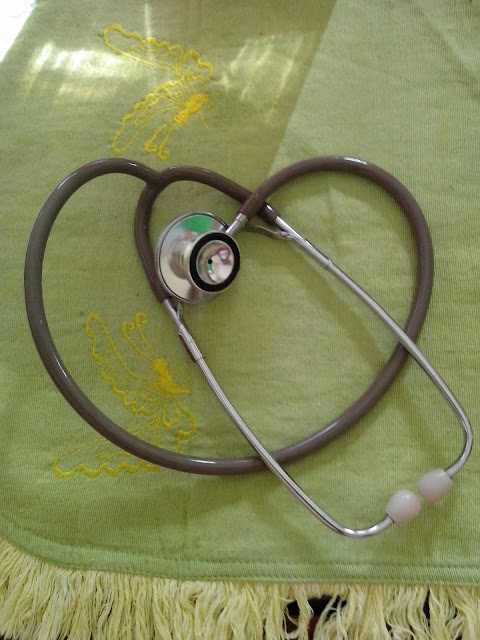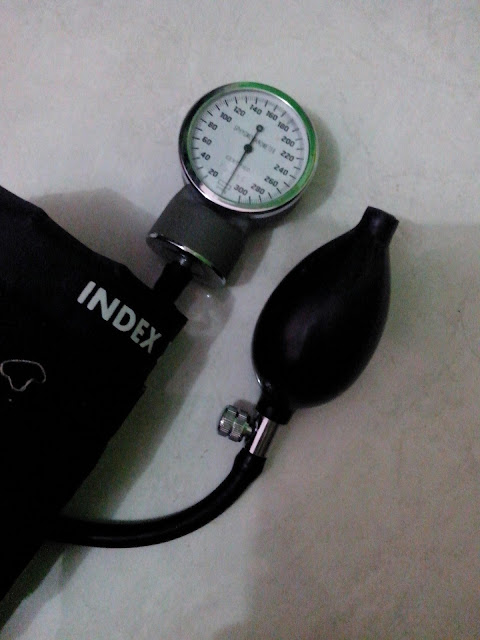A stethoscope is a medical device for listening to sounds inside the body. The initial stethoscope was invented in the early 19th century by French physician Ren� Laennec, but was actually trying to achieve a rather different end: doctor-patient distance....
Saturday, November 30, 2013
Nurse’s Ethical Duty in Wound Care
- First, the patient’s interests are placed above the personal interest of the nurse. If this duty is overlooked or forgotten, the contract (standard of practice) among the health-care provider, the health-care organization, and the patient is broken. — Example: The health-care provider conducts a seminar and needs wound photographs to supplement the written and verbal components of the presentation. The provider takes photographs of the patient’s wounds solely for the purpose of using them in the seminar. The only reason for taking these photographs is for the convenience of the health-care provider, and therefore the activity is actually for the nurse’s personal interest and not for the patient’s best interest. The patient would need to grant the nurse informed consent to use the photographs to avoid any consideration that the photographs are for personal interest. The nurse would need to assure the patient that any refusals on the patient’s part would have no effect on the nurse-patient relationship or the patient’s treatment.
- The patient’s privacy is protected from another individual’s or society’s desire to know details of the patient’s treatment. It is the health-care provider’s responsibility to have a complete understanding of the legal rights of all involved. It is ultimately the responsibility of the nurse to know the legal rights of the patient, family, and health-care provider. However, in many areas of the world, the general public does not have any legal right to knowledge concerning the patient’s care, progress, or prognosis. The health-care provider must identify if the health-care organization has a policy or procedure concerning this challenge.
- Does the health-care provider have a duty to treat the patient who has a wound(s)?
Thursday, November 28, 2013
Overview of Respiratory Function
- Alveolus—air sac where gas exchange takes place
- Apex—top portion of the upper lobes of lungs
- Base—bottom portion of lower lobes of lungs, located just above the diaphragm
- Bronchoconstriction—constriction of smooth muscle surrounding bronchioles
- Bronchus—large airways; lung divides into right and left bronchi
- Carina—location of division of the right and left main stem bronchi
- Cilia—hairlike projections on the tracheobronchial epithelium, which aid in the movement of secretions and removal of debris
- Compliance—ability of the lungs to distend and change in volume relative to an applied change in pressure (eg, emphysema—lungs very compliant; fibrosis—lungs noncompliant or stiff)
- Dead space—ventilation that does not participate in gas exchange; also known as wasted ventilation when there is adequate ventilation but no perfusion, as in pulmonary embolus or pulmonary vascular bed occlusion. Normal dead space is 150 mL.
- Diaphragm—primary muscle used for respiration; located just below the lung bases, it separates the chest and abdominal cavities
- Diffusion (of gas)—movement of gas from area of higher to lower concentration
- Dyspnea—subjective sensation of breathlessness associated with discomfort, often caused by a dissociation between motor command and mechanical response of the respiratory system as in:
- Respiratory muscle abnormalities (hyperinflation and airflow limitation from chronic obstructive pulmonary disease [COPD]).
- Abnormal ventilatory impedance (narrowing airways and respiratory impedance from COPD or asthma).
- Abnormal breathing patterns (severe exercise, pulmonary congestion or edema, recurrent pulmonary emboli).
- Arterial blood gas (ABG) abnormalities (hypoxemia, hypercarbia).
-
- Hemoptysis—coughing up of blood
- Hypoxemia—PaO2 less than normal, which may or may not cause symptoms (Normal PaO2 is 80 to 100 mm Hg on room air.)
- Hypoxia—insufficient oxygenation at the cellular level due to an imbalance in oxygen delivery and oxygen consumption (Usually causes symptoms reflecting decreased oxygen reaching the brain and heart.)
- Mediastinum—compartment between lungs containing lymph and vascular tissue that separates left from right lung
- Orthopnea—shortness of breath when in reclining position
- Paroxysmal nocturnal dyspnea—sudden shortness of breath associated with sleeping in recumbent position
- Perfusion—blood flow, carrying oxygen and CO2 that passes by alveoli
- Pleura—serous membrane enclosing the lung; comprised of visceral pleura, covering all lung surfaces, and parietal pleura, covering chest wall and mediastinal structures, between which exists a potential space
- Pulmonary circulation—network of vessels that supply oxygenated blood to and remove CO2-laden blood from the lungs
- Respiration—inhalation and exhalation; at the cellular level, a process involving uptake of oxygen and removal of CO2 and other products of oxidation
- Shunt—adequate perfusion without ventilation, with deoxygenated blood conducted into the systemic circulation, as in pulmonary edema, atelectasis, pneumonia, COPD
- Surfactant—fluid secreted by alveolar cells that reduces surface tension of pulmonary fluids and aids in elasticity of pulmonary tissue
- Ventilation—movement of air (gases) in and out of the lungs
- Ventilation-perfusion (V/Q) imbalance or mismatch—imbalance of ventilation and perfusion; a cause for hypoxemia. V/Q mismatch can be due to:
- Blood perfusing an area of the lung where ventilation is reduced or absent.
- Ventilation of parts of lung that are not perfused.
-
Wednesday, November 27, 2013
Biologic and Genetic Principles on Nursing
The impact of genetics on nursing is significant. The American Nurses Association (ANA) officially recognized genetics as a nursing specialty. This effort was spearheaded by the International Society of Nurses in Genetics (ISONG), which also initiated credentialing for the Advanced Practice Nurse in Genetics and the Genetics Clinical Nurse. ANA and ISONG have collaborated in the establishment of a scope and standards of practice for nurses in genetics practice. Essential Nursing Competencies and Curricula Guidelines for Genetics and Genomics were finalized in 2006. They reflect the minimal genetic and genomic competencies for every nurse regardless of academic preparation, practice setting, role, or specialty.
- Cytoplasm—contains functional structures important to cellular functioning, including mitochondria, which contain extranuclear deoxyribonucleic acid (DNA) important to mitochondrial functioning.
- Nucleus—contains 46 chromosomes in each somatic (body) cell, or 23 chromosomes in each germ cell (egg or sperm).
- Human DNA is a double-stranded helical structure comprised of four different bases, the sequence of which codes for the assembly of amino acids to make a protein—for example, an enzyme. These proteins are important for the following reasons:
- For body characteristics such as eye color.
- For biochemical processes such as the gene for the enzyme that digests phenylalanine.
- For body structure such as a collagen gene important to bone formation.
- For cellular functioning such as genes associated with the cell cycle.
-
- The four DNA bases are adenine, guanine, cytosine, and thymine-A, G, C, and T.
- A change, or mutation, in the coding sequence, such as a duplicated or deleted region, or even a change in only one base, can alter the production or functioning of the gene or gene product, thus affecting cellular processes, growth, and development.
- DNA analysis can be done on almost any body tissue (blood, muscle, skin) using molecular techniques (not visible under a microscope) for mutation analysis of a specific gene with a known sequence or for DNA linkage of genetic markers associated with a particular gene.
Monday, November 25, 2013
Using Electrocardiography (ECG) to Measures the Heart's Electrical Activity
Prepare the machine by placing the ECG machine close to the patient's bed, and plug the power cord into the wall outlet. To accommodate the precordial leads and minimize electrical interference on the ECG tracing, remove the electrodes if the patient is already connected to a cardiac monitor. Keep the patient away from objects that might cause electrical interference, such as equipment, fixtures, and power cords.
Explain the procedure to the patient as you set up the machine to record a 12-lead ECG. Tell him that the test records the heart's electrical activity and it may be repeated at certain intervals. Also, tell him that the test typically takes about 5 minutes. Emphasize that no electrical current will enter his body.



